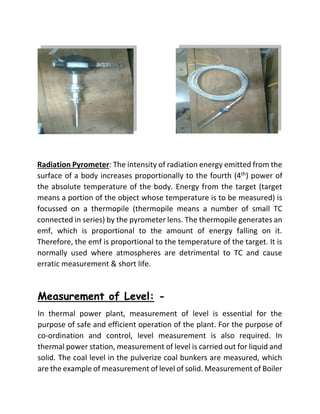This document provides a summary of Abhishek Chaudhary's summer internship at the Super Thermal Power Plant in Barh, Bihar, India. It discusses the typical components and processes involved in a coal-fired thermal power plant, including how chemical energy from coal is converted to electrical energy through boiling water to create steam that spins turbines connected to generators. It also describes the specific components of the Barh power plant, including its coal requirements, water source, capacity, and beneficiaries. The document outlines the typical Rankine cycle used in thermal power plants and discusses the functions of key components like the boiler, superheater, reheater, fuel preparation systems, stacks, air deheaters, fans, conden






































